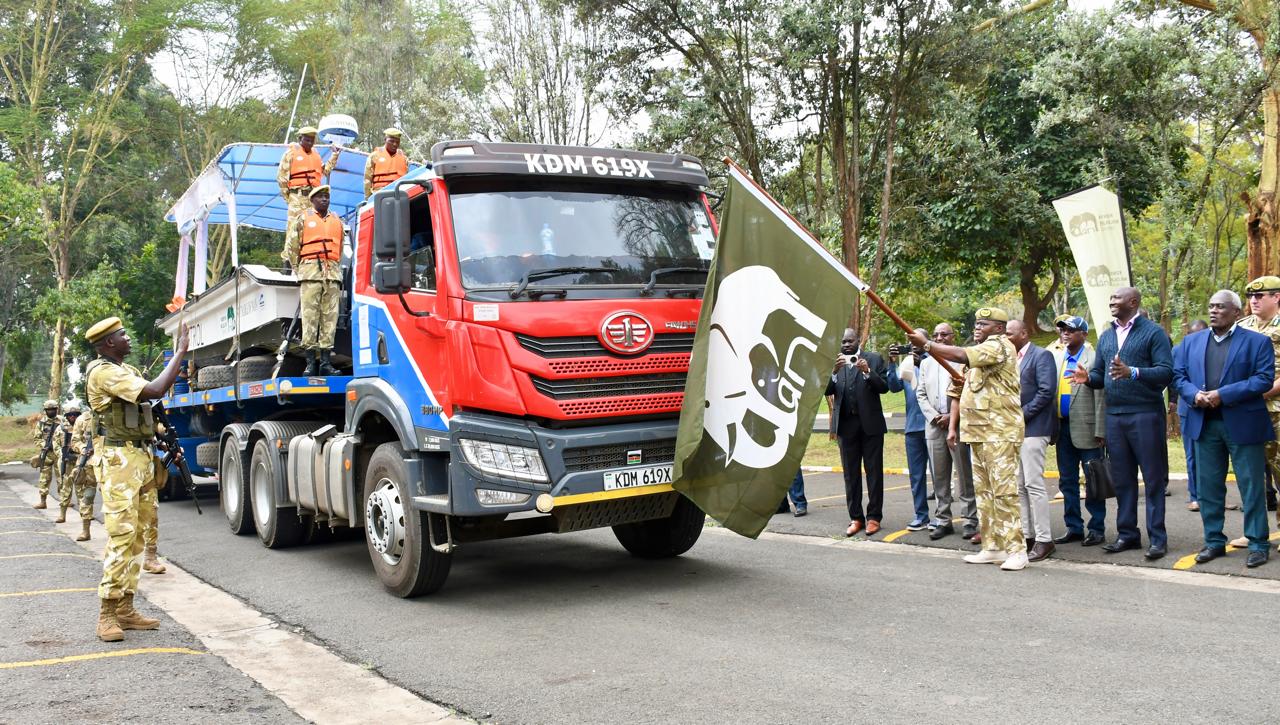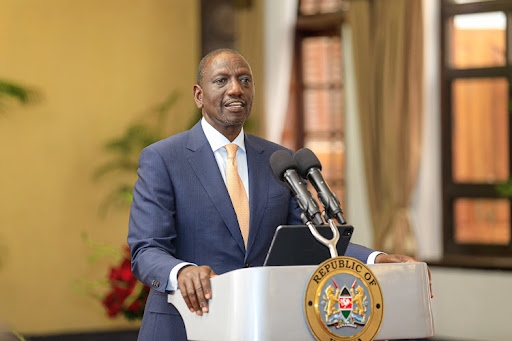Unveiling of a patrol boat at Sibiloi National Park is a milestone in Kenya’s conservation and security efforts around Lake Turkana. It signals a shift towards modern, technology-driven surveillance in protecting fisheries, deterring poaching and enhancing ranger safety in a challenging terrain. The move also carries broader implications—strengthening cross-border biodiversity protection, supporting community livelihoods and positioning northern Kenya as an emerging tourism frontier. However, its long-term impact will depend on sustained community involvement, inter-agency collaboration and addressing underlying socio-economic pressures that fuel illegal activities. This initiative exemplifies how partnerships can bridge conservation and development goals.

KWS Director General Prof Erustus Kanga commissions the boat.
The Kenya Wildlife Service has unveiled a modern patrol boat for Sibiloi National Park, marking a significant step in strengthening conservation, security and community livelihoods around Lake Turkana.
The vessel, unveiled on Wednesday, was donated by the Swedish International Development Cooperation Agency and the Horn of Africa Regional Environmental Centre and Network (HoAREC&N), with support from the South Rift Association of Land Owners.
It is equipped with advanced sonar and radar technology, enabling KWS to step up surveillance and combat illegal activities within the park’s expansive waters.
KWS director general Erastus Kanga said the boat would play a critical role in protecting fisheries, deterring poaching and ensuring safety of wildlife and communities that depend on Lake Turkana’s fragile ecosystem.
“This boat comes at a critical time. In the past two years, we have lost three officers in Sibiloi—two shot by adversaries and one drowned during a foot patrol,” Kanga said.
“With this
vessel, we can now enhance patrols, respond faster to threats and safeguard
the lake for both people and wildlife.”
Beyond bolstering security, the patrol boat is also expected to unlock new opportunities for tourism in northern Kenya.
Kanga said safer access to Sibiloi National Park and the vast expanse of Lake Turkana could open the region to more visitors and investment.
“Imagine tourists exploring the
great Jade Sea, guided by local experts, experiencing the cradle of humankind
right here in Sibiloi. That is the future we envision—where conservation fuels
tourism, creates jobs and uplifts communities,” he said.
Kanga said success depends heavily on involvement of local communities, recognising them as custodians of Lake Turkana’s resources. “Their resilience, wisdom and stewardship are the foundation upon which conservation rests,” he said.
John Kamanga, director of Soralo, said there is need to link conservation with stronger livelihoods. “This boat will improve patrols, enhance ranger efficiency and secure the future of fishing communities. Beyond this, Soralo is also committed to supporting rangers in accessing clean water,” he said.
Mekuria Argaw, director of HoAREC&N,
highlighted the regional importance of Lake Turkana, saying Sibiloi’s
protection is part of a wider ecological network. “Sibiloi does not exist in
isolation; it connects to two other parks in Ethiopia. Protecting biodiversity
here strengthens resilience across the entire Horn of Africa,” he said.
The initiative reflects the KWS Strategic Plan 2024–28, which prioritises wildlife security, community participation and partnerships as key pillars of conservation.
The patrol boat, officials said, is a tangible demonstration of how government, conservation partners and local communities can work together to safeguard Kenya’s natural heritage.
“This vessel represents more than
technology—it represents unity in purpose, where conservation and development
go hand in hand to secure a sustainable future,” Kanga concluded.


















